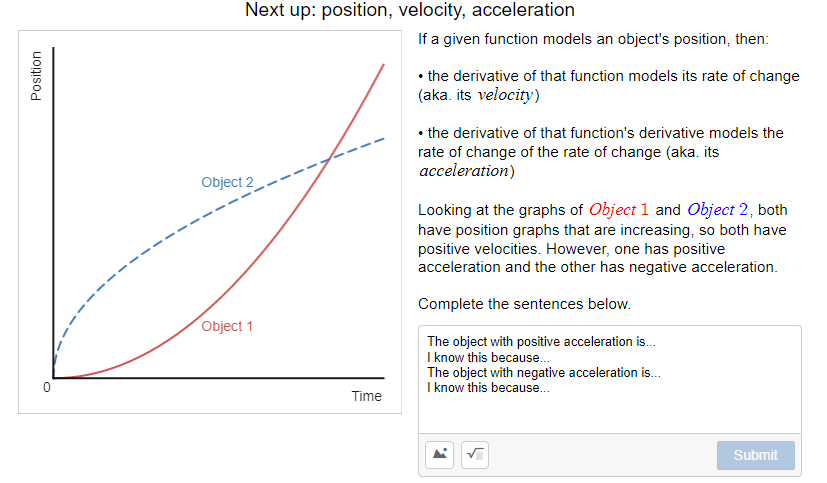If a given function models an object's position, then: • the derivative of that function models its rate of change (aka. its velocity) • the derivative of that function's derivative models the rate of change of the rate of change (aka. its acceleration) Object 2 Looking at the graphs of Object 1 and Object 2, both have position graphs that are increasing, so both have positive velocities. However, one has positive acceleration and the other has negative acceleration. Complete the sentences below. Object 1 The object with positive acceleration is. I know this because. The object with negative acceleration is. I know this because. Time Submit Position
Displacement, Velocity and Acceleration
In classical mechanics, kinematics deals with the motion of a particle. It deals only with the position, velocity, acceleration, and displacement of a particle. It has no concern about the source of motion.
Linear Displacement
The term "displacement" refers to when something shifts away from its original "location," and "linear" refers to a straight line. As a result, “Linear Displacement” can be described as the movement of an object in a straight line along a single axis, for example, from side to side or up and down. Non-contact sensors such as LVDTs and other linear location sensors can calculate linear displacement. Non-contact sensors such as LVDTs and other linear location sensors can calculate linear displacement. Linear displacement is usually measured in millimeters or inches and may be positive or negative.
Answer the question in full details

Step by step
Solved in 2 steps with 2 images






